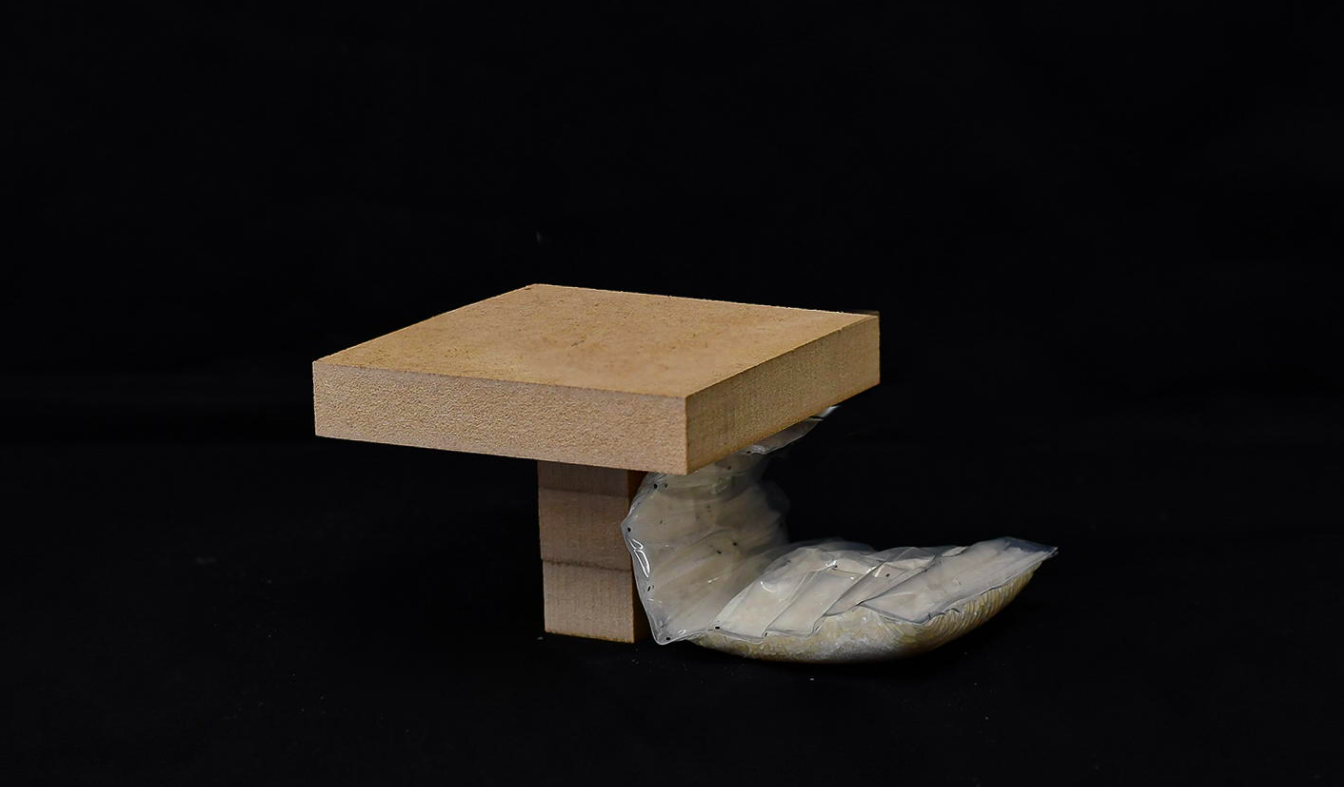
Cross cat napping with bed hopping and you might end up having an “adventure in comfort” similar to the one that informs student Yuri Nakahashi’s thesis for Tokyo’s Hosei University.
For 24 consecutive nights, Nakahashi forwent the comforts of her own bed in favor of a green sleeping bag, unfurled in whatever random location one of her five pet cats had chosen as its sleeping spot that evening.
(The choice of which cat would get the pleasure of dictating each night’s sleeping bag coordinates was also randomized.)
As the owner of five cats, Nakahashi presumably knew what she was signing up for…



Cats rack out atop sofa backs, on stairs, and under beds…and so did Nakahashi.
Her photos suggest she logged a lot of time on a bare wooden floor.
A FitBit monitored the duration and quality of time spent asleep, as well as the frequency with which she awakened during the night.
She documented the physical and psychological effects of this experiment in an interactive published by the Information Processing Society of Japan.
She reports that she eagerly awaited the revelation of each night’s coordinates, and that even when her sleep was disrupted by her pets’ middle of the night grooming routines, bunking next to them had a “relaxing effect.”
Meanwhile, our research suggests that the same experiment would awaken a vastly different response in a different human subject, one suffering from ailurophobia, say, or severe allergies to the proteins in feline saliva, urine, and dander.
What’s really surprising about Nakahashi’s itinerant, and apparently pleasure-filled undertaking is how little difference there is between her average sleep score during the experiment and her average sleep score from the 20 days preceding it.

At left, an average sleep score of 84.2 for the 20 days leading up to experiment. At right, an average sleep score 83.7 during the experiment.
Nakahashi’s entry for the YouFab Global Creative Awards, a prize for “work that attempts a dialogue that transcends the boundaries of species, space, and time” reflects the playful spirit she brought to her slightly off-kilter experiment:
Is it possible to add diversity to the way we enjoy sleep? Let’s think about food. In addition to the taste and nutrition of the food, each meal is a special experience with diversity depending on the people you are eating with, the atmosphere of the restaurant, the weather, and many other factors. In order to bring this kind of enjoyment to sleep, we propose an “adventure in comfort” in which the cat decides where to sleep each night, away from the fixed bedroom and bed. This project is similar to going out to eat with a good friend at a restaurant, where the cat guides you to sleep.
She notes that traditional beds have an immobility owing to “their physical weight and cultural concepts such as direction.”
This suggests that her work could be of some benefit to humans in decidedly less fanciful, involuntary situations, whose lack of housing leads them to sleep in unpredictable, and inhospitable locations.
Nakahashi’s time in the green sleeping bag inspired her to create the below model of a more flexible bed, using a polypropylene bag, rice and nylon film.



We have created a prototype of a double-layered inflatable bed that has a pouch structure that inflates with air and a jamming structure that becomes hard when air is compressed. The pouch side softly receives the body when inflated. The jamming side becomes hard when the air is removed, and can be firmly fixed in an even space. The air is designed to move back and forth between the two layers, so that when not in use, the whole thing can be rolled up softly for storage.
It’s hard to imagine the presence of a pussycat doing much to ameliorate the anxiety of those forced to flee their familiar beds with little warning, but we can see how Nakahashi’s design might bring a degree of physical relief when sleeping in subway stations, basement corners, and other harrowing locations.
Via Spoon & Tomago
- Ayun Halliday is the Chief Primatologist of the East Village Inky zine and author, most recently, of Creative, Not Famous: The Small Potato Manifesto. Follow her @AyunHalliday.
Related Content
A 110-Year-Old Book Illustrated with Photos of Kittens & Cats Taught Kids How to Read
GPS Tracking Reveals the Secret Lives of Outdoor Cats


Fascinating!
Chilling!
Would this help for the people in Ukraine?
This was amazing! What a wonderful thing to do…spend quality time with your cats and teach the world something new at the same time. All three of my cats sleep on my bed so I’m not sure how I could try it for myself. LOL!
From what university did she graduate,
and where do I get to apply for sleep research studies?
I would love to enjoy my job instead of hate it like most people do…
And this is the ideal job for me!
There is no cure for toxoplasmosis.
LOL WHAT?!
Pyrimethamine is considered the most effective treatment for toxoplasmosis. Its a parasitic infection and yes it can be cured.